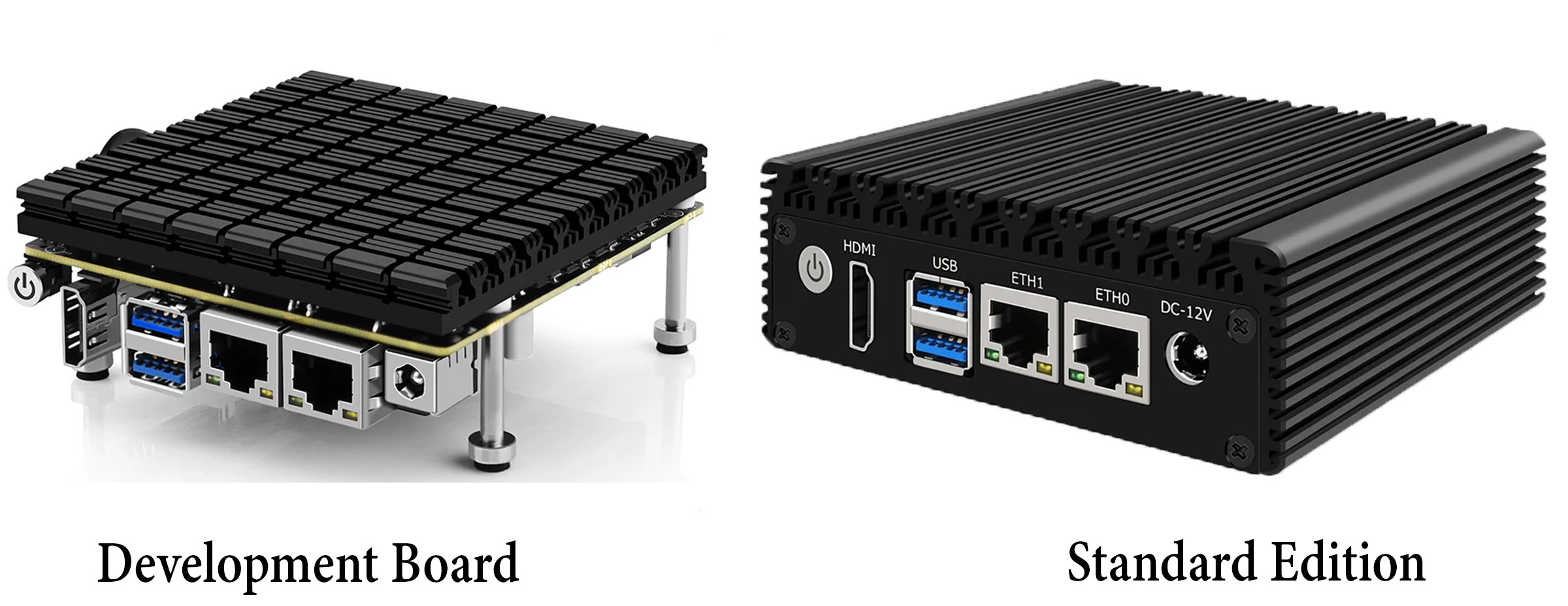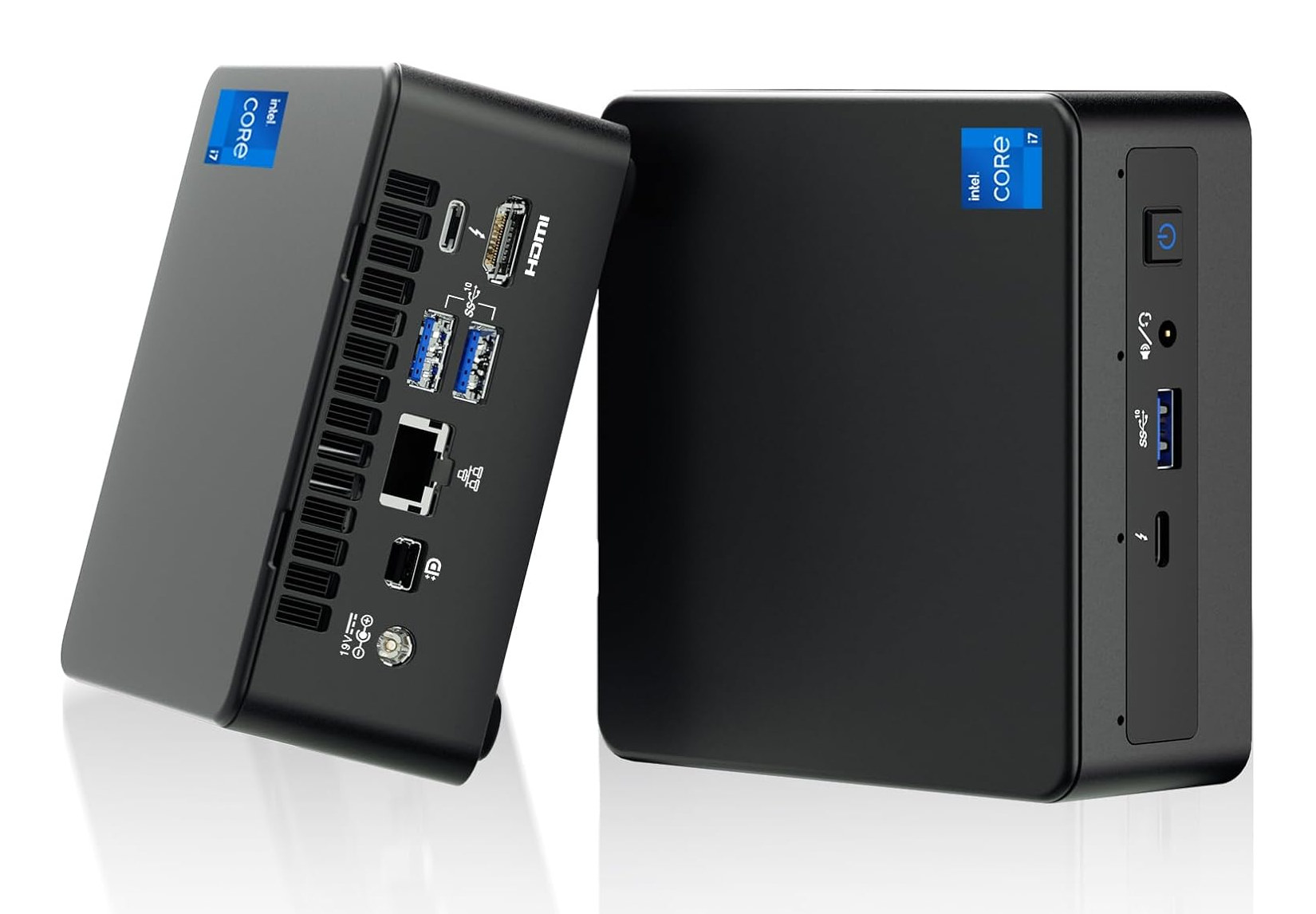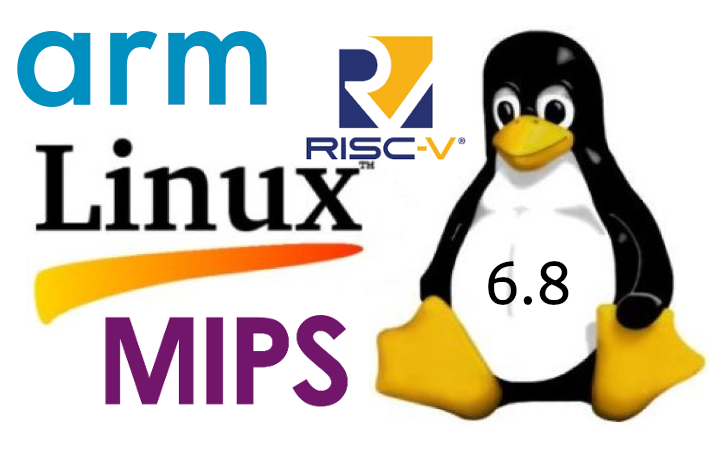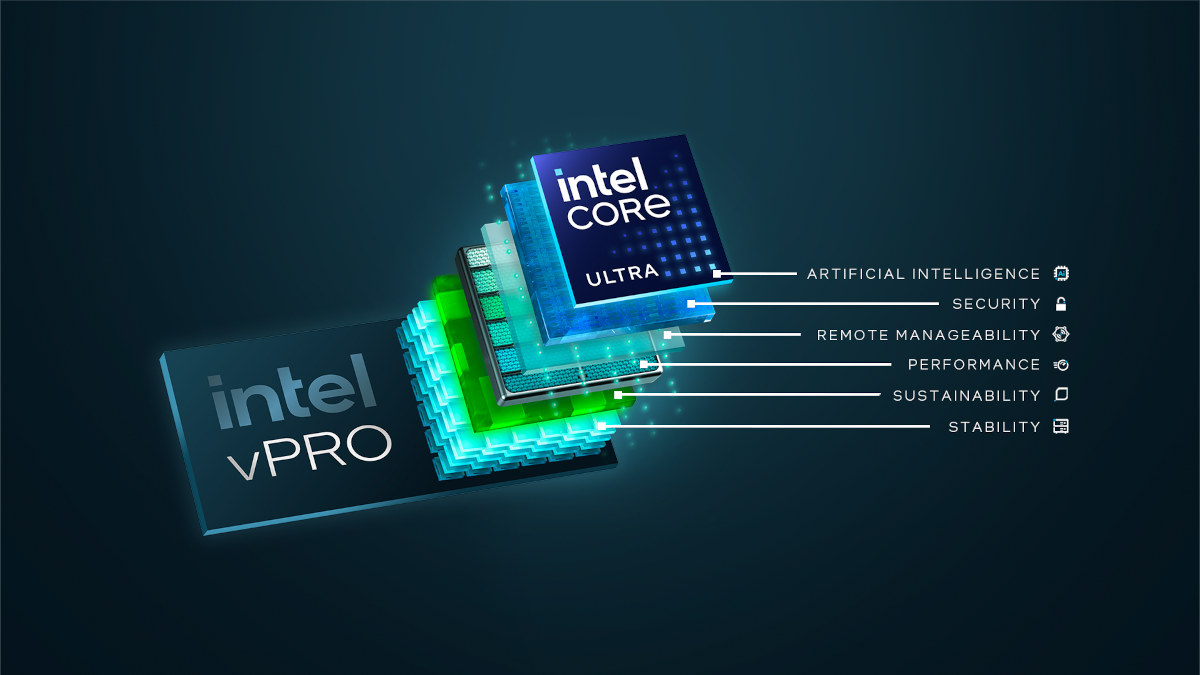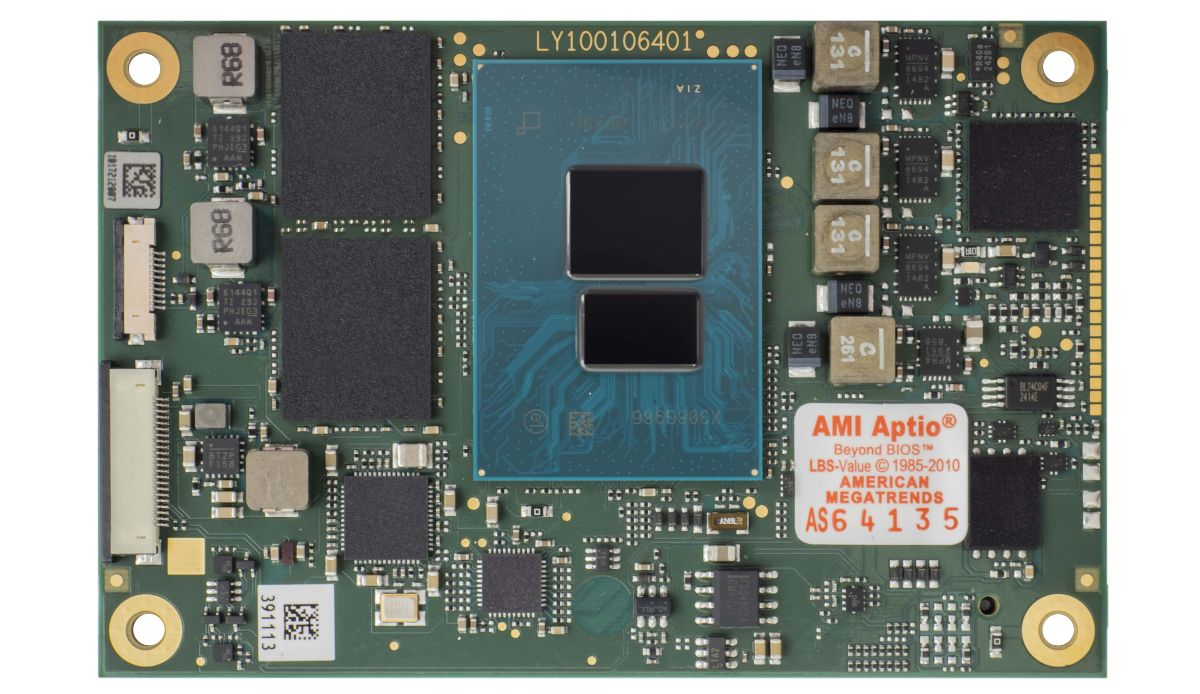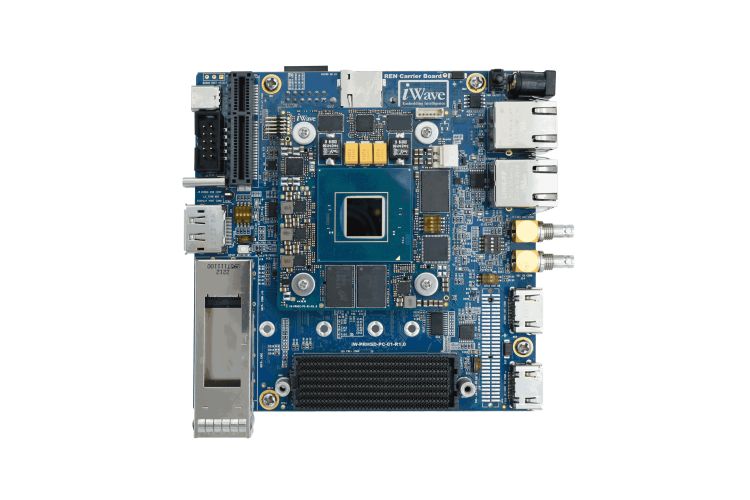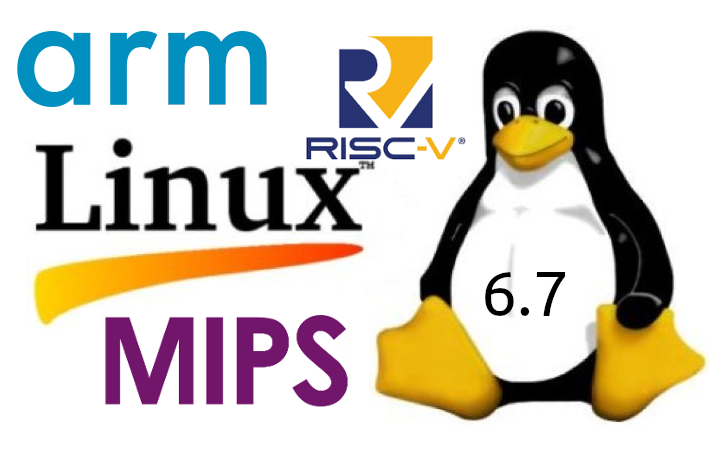In a previous post, we wrote about the CWWK X86-P5, a $219 fanless mini PC powered by the Alder Lake N-series N100 SoC. However, during a recent search on AliExpress, I stumbled upon the CWWK X86-P1 fanless mini PC and SBC. This compact device offers three variants (N3050, N3160, and N3700) with a TDP of only 6W. It features dual GbE Ethernet, dual USB 3.0, HDMI, and a GPIO header. Additionally, it includes a built-in fan header for improved cooling. It supports Windows 11, Ubuntu 22.04, and networking OS options like pfSense or OpenWrt along with all major x86-based operating systems. CWWK X86-P1 Fanless Mini PC Specification SoC options Intel Celeron N3050 – Dual core Braswell processor @ up to 2.16 GHz with Intel HD Graphics Gen8 – 6W TDP Intel Celeron N3160 – Quad-core Braswell processor @ up to 2.24 GHz with 12EU Intel HD graphics 400 – 4W […]
Intel NUC11PAHi7 with Core i7-1165G7 CPU, 16GB RAM, 512GB SSD is now available for $445.50 (Sponsored)
The Intel NUC 11 was offered with a 5% discount last month, but the company has now further dropped the price to $445.50 on Amazon with a 10% coupon code (D33TQNF4) for the NUC11PAHi7 model with an Intel Core i7-1165G7 CPU, 16GB of RAM and a 512GB NVMe SSD. First launched in 2021, the Intel NUC11PAHi7 supports up to four 4K displays through HDMI, Mini DP, and Thunderbolt interfaces, offers 2.5GbE and WiFi 6 connectivity, three USB 3.2 Gen 2 ports, and even a CIR (Consumer InfraRed) port. Here’s a reminder of the Intel NUC11PAHi7 specifications: SoC – Intel Core i7-1165G7 quad-core/octa-thread Tiger Lake UP3 processor @ up to 2.8 GHz / 4.7 GHz (Turbo) with 96EU Iris Xe Graphics; 15W TDP (configurable between 12 and 28W) System Memory – 16GB DDR4-2666 via SO-DIMM sockets expandable up to 64GB RAM Storage 512GB M.2 NVMe (PCIe Gen4) SSD SD card slot […]
Linux 6.8 release – Notable changes, Arm, RISC-V, and MIPS architectures
Linus Torvalds has just announced the release of Linux 6.8 on the Linux kernel mailing list: So it took a bit longer for the commit counts to come down this release than I tend to prefer, but a lot of that seemed to be about various selftest updates (networking in particular) rather than any actual real sign of problems. And the last two weeks have been pretty quiet, so I feel there’s no real reason to delay 6.8. We always have some straggling work, and we’ll end up having some of it pushed to stable rather than hold up the new code. Nothing worrisome enough to keep the regular release schedule from happening. As usual, the shortlog below is just for the last week since rc7, the overall changes in 6.8 are obviously much much bigger. This is not the historically big release that 6.7 was – we seem to […]
Intel Core Ultra 5 134U and Core Ultra 7 164U are 9W Meteor Lake processors
Intel Core Ultra 5 134U and Core Ultra 7 164U are new 12-core Meteor Lake processors with 9W PBP (Processor Base Power) and 30W Max Turbo Power (MTP) that appear to have recently been added to Intel Ark. Intel just announced Intel vPro Platform support for the Core Ultra Meteor Lake processors to make those more suitable to business customers with improved security through AI-powered Intel Threat Detection Technology, better manageability with the Intel Device Discovery comprised of cloud-based tools for managing PCs remotely, and enhanced stability thanks to Intel’s Stable IT Program aiming to validate and ensure Windows 10 and Windows 11 compatibility. But Liliputing also notes that Intel has added some 9W parts besides the existing 15W parts such as the Intel Core Ultra 5 125U or Core Ultra 7 165U, namely the Core Ultra 5 134U and Core Ultra 7 164U. They are quite similar to the […]
Avnet MSC C10M-ALN – A COM Express Type 10 Mini Module with Intel Alder Lake-N CPU, LPDDR5 memory
Avnet MSC C10M-ALN is a COM Express Type 10 module powered by the Alder Lake-N family of processors including the Intel Core i3, Intel Atom x7000E, and Intel Processor N-Series. The design allows for easy adaptation of applications between various Intel CPU models, ensuring compatibility across different performance and power needs. The module supports up to 16GB LPDDR5 memory with optional In-Band Error Correcting Code(IBECC), eMMC 5.1 storage, and features an Intel i226 2.5GbE controller. It can handle up to two 4K displays through DDI and eDP video outputs, ten USB ports including USB 3.2 Gen 2, and four PCI Express Gen 3 x1 slots for expanded connectivity options. Avnet MSC C10M-ALN Com Express Module Specification: Alder Lake-N SoC (one or the other) Intel Core i3-N305, eight-core, 1.0GHz/1.8GHz, 32EU Intel UHD Graphics, 9/15W, PUC (PC Client Use Conditions) Intel Atom x7425E, four-core, 1.5GHz, 24EU Intel UHD Graphics, TCC, 12W, EUC […]
iW-RainboW-G58M is a compact module based on the Intel Agilex 5 SoC FPGA series
iWave Systems, an embedded systems solutions company based in India, has announced the launch of the iW-RainboW-G58M system-on-module (SoM). The module is based on Intel’s Agilex 5 SoC FPGA E-series family, a lineup of affordable, midrange FPGAs for intelligent edge and embedded applications. The Agilex 5 E-series is optimized to deliver better performance-per-watt than its predecessors at a smaller form factor. They feature an asymmetric applications processor system comprising two Arm Cortex-A76 cores and two Cortex-A55 cores for optimized performance and power efficiency. The Arm cores in the Agilex 5 SoC FGPA family are more powerful than the Cortex-A53 cores in the Intel Agilex 7 and 9 products, but those have faster high-speed interfaces and more logic elements. The Agilex 5 SoM is suitable for development in fields like wireless communications, video/broadcast, and industrial test and measurement sectors. The last iWave module we covered, the iW-RainboW-G55M, was based on a […]
Linux 6.7 release – Main changes, Arm, RISC-V, and MIPS architectures
Linus Torvalds has just announced the release of Linux 6.7, following Linux 6.6 LTS a little over two months ago: So we had a little bit more going on last week compared to the holiday week before that, but certainly not enough to make me think we’d want to delay this any further. End result: 6.7 is (in number of commits: over 17k non-merge commits, with 1k+ merges) one of the largest kernel releases we’ve ever had, but the extra rc8 week was purely due to timing with the holidays, not about any difficulties with the larger release. The main changes this last week were a few DRM updates (mainly fixes for new hw enablement in this version – both amd and nouveau), some more bcachefs fixes (and bcachefs is obviously new to 6.7 and one of the reasons for the large number of commits), and then a few random […]
2023 Year in review – Top 10 posts, statistics, and what to expect in 2024
It’s the last day and last article of the year, so we will look at some highlights of 2023, some traffic statistics on the CNX Software website, and speculate what interesting developments may happen in 2024. Looking back at 2023 The semiconductor shortage that had happened since 2020 started to fade away in early 2023, and supplies for most electronics components and devices seem to be adequate at this time, so that was a bright spot this year, and hopefully, it will stay that way in 2024 despite geopolitical tensions. We did not have any super exciting new Arm application processors from Rockchip, Amlogic, or Allwinner announced this year, although the Amlogic S928X penta-core Cortex-A76/A55 CPU started to show up in some 8K TV boxes. The launch of the Raspberry Pi 5 SBC with a Broadcom BCM2712 quad-core Cortex-A76 processor was probably the main highlight for Arm on this side […]


